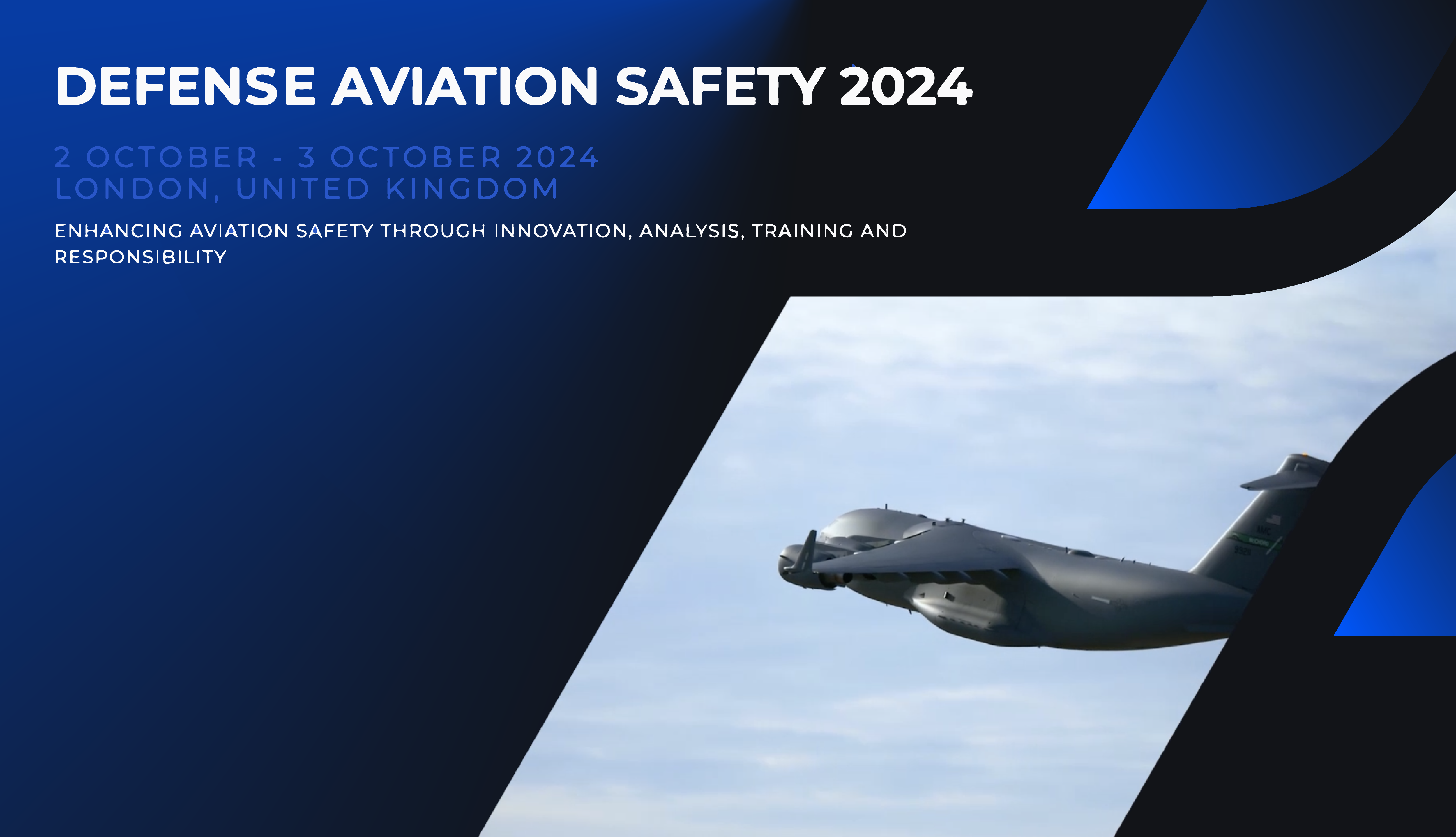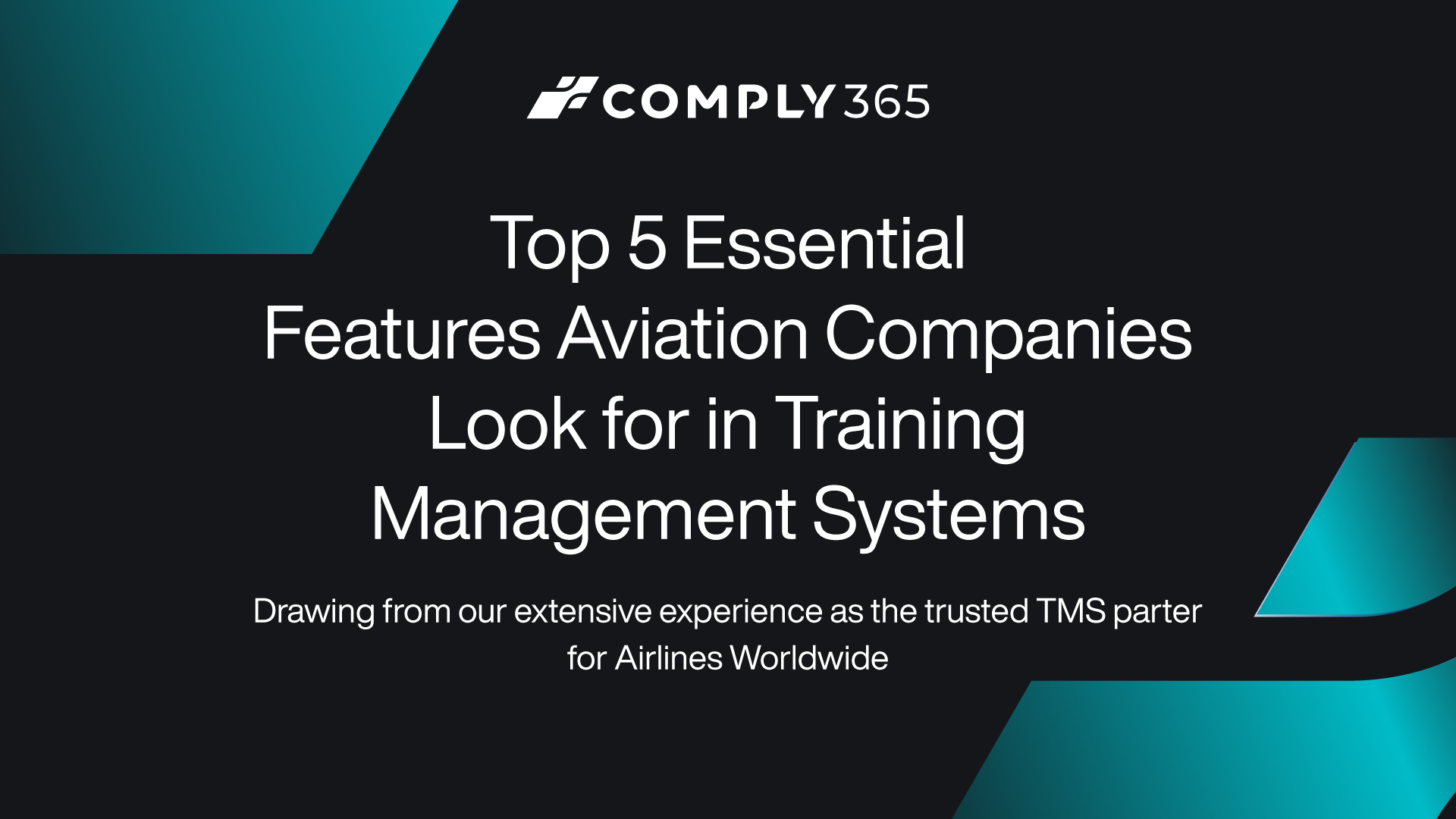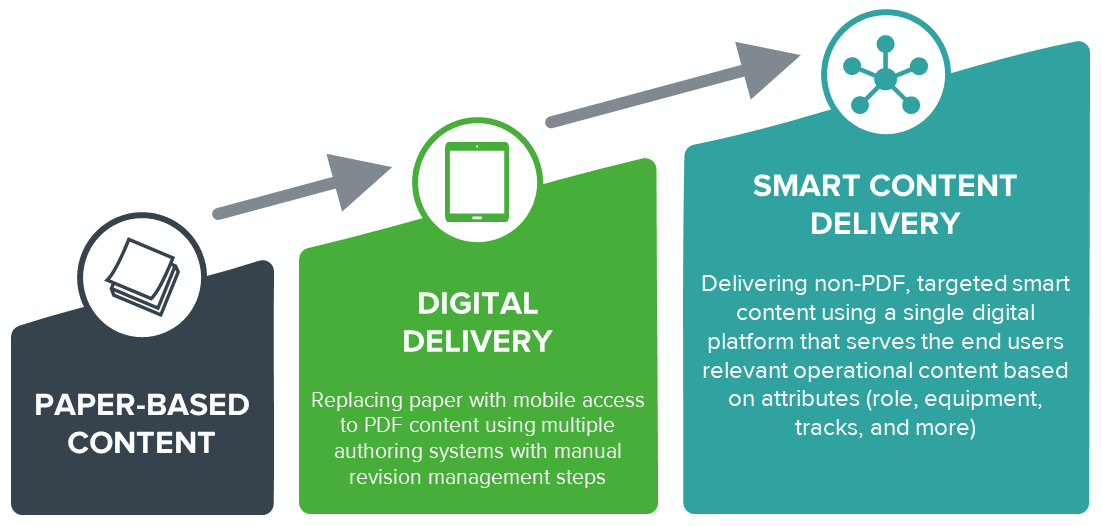
Learnings from the SAE Media Defence Aviation Safety Conference 2024: Enhancing Aviation Safety Through Innovation, Analysis, Training and Responsibility.
This October, London became the nexus for over 15 nations’ armed forces, coming together for the Fifth Annual Defence Aviation Safety Conference. With the global defense sector facing a degree of flux in many ways unmatched since WWII, fueled by the rapid evolution of battlefield and technology, a shift in collective consciousness has seen the role of safety go from a desirable operational outcome to a critical factor in military effectiveness.
As with the wider aviation sector, defense aviation faces new and evolving challenges related to resources, technology and environment. Geopolitical complexity and the burden of legacy technology are compounded by growing rates of attrition across defense personnel. Echoing the conference’s theme of ‘Enhancing Aviation Safety through Innovation, Analysis, Training and Responsibility’, the summit saw defense sector leaders discussing the pivotal function of safety in matching the increasing pace of change posed by adversaries/modern warfare. With the US Air Force’s Col. Jesse S. Doyle observing ‘Powerful competition has driven a need for evolution’, the gathered forces discussed how they were responding to the drive for ever more agile, resilient and effective strategies with safety underpinning all operations.
In today’s complex geopolitical environment, safety is a multi-faceted and rapidly evolving element of modern defense. To best leverage safety for military effectiveness, it must be broken down into its various elements, before we can understand how to apply ensuing technological and practical developments. In the following six key takeaways from the event, we will explore critical developments, from safety culture to its role in a resilient operating model, as well as technological advancements driving the efficacy of safety:
- Safety Culture – understanding human factors for a proactive safety approach
- Operational Resilience – protecting key safety tenets while driving efficiency
- Risk Management and Mitigation – creating a sturdy foundation for safety
- Data and the Drive for Digitization – streamlining legacy processes with effective data handling
- Artificial Intelligence – understanding the difference between Large Language Models, Machine Learning and Artificial Intelligence, as well as their potential implementations
- Industry and Defense – what can civil aviation learn from the defense sector, and vice versa?
Safety Culture
In the words of Air Commodore Howard Edwards, ‘Defense aviation is about delivering effect… The primary role is to survive and to defeat – to do that you must be safe.’ In many ways, safety culture is both the driving force behind, and a product of, the value, perception and practice of safety in an operational environment. Marking a pivotal moment in attitudes towards safety as being proactive, as much as reactive, the 2009 ‘Nimrod Review’ proved a catalyst for fundamental cultural change in the British Armed Forces. In response to the largest loss of life of British service personnel in a single incident in theatre which occurred in 2006, the government appointed Charles Haddon-Cave QC to conduct a review into the avoidable incident. In the publication. Haddon-Cave spoke for a ‘Just Culture’ which ‘strikes a sensible balance between ‘blame culture’ and a ‘blame-free culture’, i.e. between holding people properly accountable for their acts or omissions and ensuring the right lessons are learned for the future.’ In the 15 years since the review’s publication, the RAF, alongside other air forces, have followed this doctrine, implementing its message into a comprehensive Safety Management System (SMS), exemplified by the words of Edwards. By encouraging proactive reporting, with a non-punitive response championed by many of the conference’s speakers, air forces are able to take a pre-emptive approach to hazards, in order to gain the critical operational advantage by preserving the life of personnel and the platforms they crew.
Though safety culture is unquantifiable, its impact manifests in numerous ways. Many speakers highlighted a rise in hazard reporting as evidence of a growing safety culture; if personnel recognize the value in reporting a hazard before it causes an incident, overall safety will improve, while providing greater data for preventative measures. Therefore, the higher the ratio of hazards to incidents reported, the better the force-wide safety culture. Similarly, other metrics used to measure cultural change include the ratio of reports to flying hours, and the number of individuals reporting.
In the words of the US Combat Readiness Center’s Brigadier General Johathan Byrom, safety is a product of ‘training, discipline, safety culture and mitigating risk’. Thus, the approach to safety culture should be motivated by discipline and a recognition of value, as with other elements of operations. While air forces are reinforcing this messaging through regular training, publishing safety articles, and top-down leadership, there is still progress to be made and obstacles to overcome. As a result of outdated, labor-intensive processes, one speaker shared that soldiers were failing to report as they viewed it as an arduous, unnecessary administrative task, demonstrating the significant operational opportunity presented by reporting on mobile devices. To leverage the benefits of proactive reporting, militaries must modernize processes, embracing innovative and specialized software systems as demonstrated by the MAA, whose ASIMS platform has seen a 40% year on year growth in reporting through ease of use, intuitive UX, and cross-platform functionality. Through diligent training, reinforced by positive outcome-focused messaging, safety culture will grow to form a solid foundation for global defense forces.
Operational Resilience – protecting key tenets of safety while maintaining operational efficiency
In the wider context of the modern military, which (much like commercial aviation) is seeing a shortage in SQEP (Suitably qualified and experienced persons) and wider resource scarcity, a profound understanding of safety is crucial to making informed decisions in the field. In an increasingly common effort to ‘do more with less’, forces are maintaining operational resilience by leveraging their understanding of risk, bolstered by a strong reporting culture, coupled with innovative technology to complement the efforts of personnel. By making informed, risk-conscious decisions, forces are able to protect the key tenets of safety while driving efficiency.
With pressure caused by time-scarcity and attrition, safety is integral in maintaining operational resilience. In his briefing discussing increasing combat power through risk management and analysis, the USAF Safety Center’s Colonel Michael Thomas observed, ‘We want to be able to train people to make well informed decisions. We no longer have the time or the people to create the scenario to practice ahead of time.’ By ensuring a thorough understanding of a mission’s risk, commanders enable warfighters to make informed decisions while operating in austere conditions, improving efficiency thanks to safety, rather than at its cost.
Similarly, the Luftwaffe’s Brigadier General Armin Havenith posed the question, ‘Does flight safety impede military operations?’. Speaking of the fine balance between mission efficiency and measures for maximum safety, such as pre-emptive grounding of aircraft which disrupts operational tempo, Havenith made the case for safety as a driving factor for resilience. By shifting the approach from reactive to proactive, using data-driven decisions to act before incidents occur, there need not be a trade-off between the key tenets of safety and overall efficiency – maintaining airworthiness while enhancing capabilities even in resource-constrained environments.
Risk Management and Mitigation
In an era defined by growing global conflict, the MoD’s Dir. Gen Air Keith Bethell explored measures for ‘enhancing support to the warfighter, safely.’ Navigating a complex ecosystem of new technology and evolving operating models, Bethell echoed the sentiments of all attendees, focusing on ‘delivering programs with a shift towards operational excellence in terms of project delivery, done in a sensible, risk-conscious manner’. Striking a balance between defense output and safety is therefore weighted towards the bifold approach to risk – awareness and mitigation. In his address, Bethell highlighted the role of risk management in, ‘Delivering the outputs our armed forces need today, to sharpen defense’s edge for tomorrow.’ By doing so, soldiers are able to maximize output and minimize incidents which would disrupt operations. The core message is to take an informed approach in to be ‘risk sensible’, not ‘risk averse’ – ‘We don’t want to be risk cavalier, but being risk averse is deluding our capacity.’
Military aviation is intrinsically unsafe by definition. As one speaker observed, the key difference between civil and military aviation is the presence of the enemy. Therefore, in an environment where operations are inherently unsafe, there has been a drive to shift the focus from practical safety to risk management, with the end goal of risk mitigation. With combat demanding ever more advanced strategy and technology in a ‘more hostile, heated and congested’ airspace, forces are promoting risk management as an integral factor in maintaining air superiority. Exemplified by Bethell’s presentation, armed forces are using the shift in safety’s definition to enable readiness through risk management.
Data and the Drive for Digitization
With a universal drive towards risk mitigation through informed decision-making, leveraging vast amounts of historic data was recognized as one of the key factors in safety. However, the rate at which data analysis was being undertaken formed a noticeable divide in the gathered attendees, proving a deciding factor in technological advancement. While legacy data is understood to be a valuable tool for mapping trends, understanding cause and effect, and making informed risk-conscious decisions, ‘data-lakes’ grow by the day, and being able to efficiently decipher the information therein is becoming a barrier, rather than a useful weapon in the safety armory.
As observed by Air Commodore Rob Caine, ‘At an operational and strategic level, we have ‘analysis paralysis’ – by not making decisions, we are making decisions, and often they are worse.’ This typifies the double-edged sword of data analysis: while it is an invaluable source of information, leveraging it is also seen as labor-intensive, presenting an arduous task for already resource-scarce forces. The use of business intelligence tools to replace manual processes is not as commonplace in defense as it is in civil aviation; however, where tools such as PureIntel are being used, leaders are able to free up key personnel for more strategic operations, saving resource and streamlining legacy processes.
Artificial Intelligence
An increasingly divisive topic, Artificial Intelligence was a prominent feature in the conference’s discussions. Immediately apparent was the misappropriation of the term AI in discussions surrounding subfields such as Large Language Models (LLM) and Machine Learning (ML). While both require training on vast amounts of extant data, LLM must be trained on text, enabling them to generate language, summarize information, and answer questions. ML uses algorithms trained on data sets to create models, such as analyzing data, and predicting future outcomes.
While such technologies are in their nascent iterations in a military context, there have been several successful applications. Training a system on the data gathered in 327,000 hours of Typhoon maintenance, the RAF have been able to optimize engineering by overlaying information into an LLM. While the process will inevitably not replace human input, by handling 90% of data sorting and analysis, this application of AI optimizes processes to free human resource.
Although a promising result, the discussion was tempered with the restrictions of a largely experimental technology in critical environments with zero room for error. Attendees were reminded that in order to effectively train any form of artificial intelligence to an operational standard, it must be trained on large quantities of exquisite data. Thus, a focus on collecting high-quality data through effective reporting, input and handling is critical to AI’s future use. Furthermore, replacing human input with AI leads to the question of accountability – should an error occur, liability is challenging, requiring diligent deployment and constant monitoring. As a result, the overall message of those in attendance was to focus on optimizing your data now and create comprehensive strategies for gathering it, in order to provide the best foundation for future use once it has reached sufficient capability for widespread application.
In many cases, readily available alternatives to AI are far more effective, infallible and efficient: business intelligence platforms are able to analyze large amounts of data, presenting it in digestible and configurable dashboards for department-agnostic use; intuitive SMS guide the reporter to input better quality data to help analysts observe trends more clearly. While the promise of AI appeals to a resource-scarce sector, one must not sacrifice the safety of personnel and systems in an effort to drive efficiency.
Industry and Defense
Although differentiated by aircraft flown and environments operated within, civil and military aviation are united in their drive towards safety. While combat necessitates innovation in operational strategy and technology, factors in commercial aviation such as strict regulatory authorities, insurers and customers have created a rigorous safety culture in many ways unmatched in defense.
In spite of such differences, defense is making a marked effort to learn from commercial aviation, with the establishment of industry partnerships, and the adoption of data-driven safety strategies to foster a culture of reporting. By leveraging software developed in the commercial sector, militaries can increase the pace of digitization in order to free up human resource.
As mentioned, each armed force has vast quantities of data which they can use to inform future strategy. However, the availability of such information is poor and siloed within each force. The European Union Aviation Safety Agency has demonstrated the value it holds in sharing data for common good with its Data4Safety program. By collating data from airlines, manufacturers, airports, training organizations and MROs, Data4Safety provides a collaborative analysis and Big Data platform to create metrics, directed studies, blind benchmarking and vulnerability studies to promote safety sector-wide. Although data sharing presents risks, EASA’s partnership is testament to a shared effort echoing the mantra ‘we do not compete on safety’.







 Comply365 has been
Comply365 has been 

